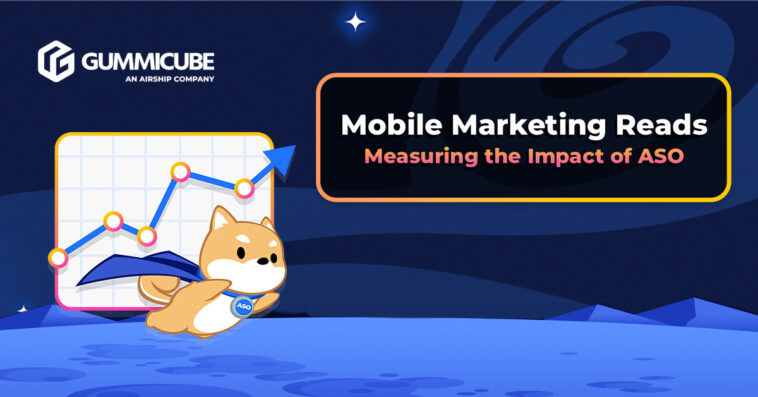No matter the type of app or business model, at the very end of the day, all developers and companies just want one thing: more downloads.
Downloads can come from anywhere though. You’re likely running user acquisition campaigns through different sources and a multitude of other channels that you think may be bringing in the installs you need. However, one channel requires the most time and dedication to understand and optimize: Organic.
Understanding organic traffic and installs eludes even the best of marketers. With thousands of developers utilizing App Store Optimization strategies to increase their organic app performance, the same people still wonder if it’s even possible to track and understand if anything’s really working.
They often ask questions such as:
- “Is my App Store Optimization strategy working?”
- “How many users are coming in organically versus my paid channels?”
- “Is there anything I can do to increase my overall number of downloads without paying more money than I already am?
Both Apple and Google released hard statistics noting that “over the majority of downloads – almost 65% happen directly after a search.” If you’re not understanding where your installs are coming from, your mobile marketing strategy may not be as holistic as you think.
What channels are organic?
Both Apple and Google have multiple ways of looking at your data in each respective console. Depending on what you’re looking to see or understand, each console can be completely customizable for your view and your KPIs. You can look at top-of-funnel traffic and installs, you can look at some early areas of the user journey, you can even look and understand which devices are installing the most.
In order to assess your organic performance, you’ll need to take a look at these channels:
Apple – iOS App Store
- App Store Search: The channel that captures a user finding your app for the first time in the Search Results of the App Store after having used a term/phrase in the Search bar of the App Store.
Google – Google Play Store
- Search: Traffic and installs from branded searches of the app. This can include variations of your app name, including misspellings. As an example, if your app name is “Brand Name”, your “search” traffic and installs may be coming from “Brand Name”, “BrandName”, “Brand Name App”, etc.
- Explore: Search traffic and installs that are rooted in user discovery. This includes generalized searches tied to app functionality (like searching up “productivity” to find Microsoft Word) and any traffic that comes from elsewhere in the Google Play Store (like your app being featured)
Organic can be considered channels that you’re not exactly paying for (e.g. if you run your own website that includes links to the store) but it’s not as simple as that.
What is organic?
Organic traffic and installs can be considered whatever you’re not paying for as part of your mobile marketing strategies. However, in order to drill down exactly what to look at to understand your App Store Optimization impact, you’ll want to understand what’s directly impacted by ASO.
App Store Optimization, at a very base level, touches on the following:
- App Title (consumer facing)
- App Subtitle / Short Description (consumer facing)
- Keyword Bank (iOS only, non-consumer facing)
- Description (consumer facing)
- Creatives (consumer facing)
Each of these aspects have an impact on how you rank for keywords and how highly you’re able to appear for those same terms. The types of keywords you target and emphasize as part of your App Store Optimization strategy will determine exactly what you rank for.
The app store algorithms will look through your metadata to understand how you’re relevant to your targets and rank you where they see fit. The higher you rank for certain terms, the more likely you will see your search traffic increase, and hopefully your installs increase in-line with that.
Organic – Google Play
With Google Play, Search and Explore will capture all of your organic traffic and installs. Searches for your brand and searches for relevant app features will encapsulate your organic traffic and installs. These two channels can be combined to give you a holistic view of your organics.
However, Explore is not exclusive to search term traffic. Explore also contains traffic and installs coming from being featured or category placements.
With this in mind, you’d likely need to adjust the way you look at daily trends, which could mean excluding dates that your app may be featured.
Organic – iOS
Apple makes it pretty easy on everyone with branded or generic search traffic and installs all appearing under App Store Search.
However, App Store Search isn’t purely organic, much like how Google Play Explore isn’t either. If you’re running Apple Search Ads campaigns (Basic and/or Advanced) as part of your mobile marketing strategy, the traffic and installs will appear as part of App Store Search. Apple doesn’t make this distinction in its console data and it requires access to both App Store Connect and Apple Search Ads to pull apart.
As you assess App Store Search, you will need to remove the impressions and “new installs” (name within Apple Search Ads) from the same days in App Store Search. Only then will you have Organic to look at. If you’re not running Apple Search Ads, then you won’t have to worry about this separation.
What should I keep in mind when I assess organic for the impact of my ASO strategies?
With organic traffic and installs being clearly defined in our measurement, the next desire would be to see how many impressions and installs ASO has brought in for your app.
However, just like any other channel you’re running, Organic performance is sensitive to things like:
- Fluctuations in other channels (“I ran out of budget and had to turn off every campaign.” or “We turned off Meta ads because of a credit card issue).
- Apple has 4 other channels that may impact organic performance: App Referrer, Web Referrer, App Store Browse and Apple Search Ads.
- Google’s Ads & Referrals channel will impact how Search and Explore trends
- Market fluctuations including things like COVID-19 or how this year’s Olympics (or any Olympics cycle) increased installs across relevant Entertainment apps
- Seasonality (Fitness apps see their peaks in January whereas productivity apps see their peaks in January AND August)
- App Store outages (Days where data doesn’t accrue or data is misattributed to another channel)
It’s important to keep in mind the objective of your App Store Optimization strategy and work against things that might impact your data.
As an example, if you’ve suddenly turned off a traffic channel or had to shift your budgets dramatically, you should expect your organic to follow a similar trend. With added traffic, you’re placed into more competitive positions for certain searches. If that traffic begins to decrease, your rankings likely will as well.
Increases in traffic will also positively impact your organic performance, but keep in mind that had you not implemented your ASO strategy, you wouldn’t have been able to appear higher for the terms you targeted.
If you’re in a vertical with consistent seasonal behaviors, it’d be best to look at your data this year and the same time frame last year to understand how your performance with ASO this year compares to last year. If the level of support/spend is vastly different, then looking at your current data set will be more than enough.
Final Notes
Like App Store Optimization, pulling apart the data sources to understand performance can be just as intricate. It’ll always be worthwhile to dive into the data yourself or with your team. Never trust things at the surface, especially with pre-populated dashboards that almost always cause alarm without showing root causes. With an understanding of how to track your Organic performance, your App Store Optimization strategies can be refined for your app to flourish.






Comments
Loading…